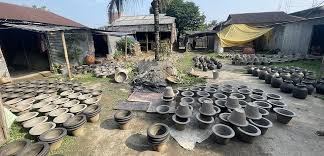
Terracotta, one of the oldest forms of earthen art in India, is witnessing a strong revival in modern homes. Traditionally used in temples, figurines, and architectural details, terracotta is finding its way into contemporary interiors as both a decorative and sustainable choice. Its natural earthy tones and handcrafted textures bring warmth and authenticity to urban living spaces.
Designers and homeowners are increasingly embracing terracotta because of its versatility. From simple clay planters to intricate wall tiles and sculptural pieces, terracotta blends effortlessly with modern décor. Kitchens, balconies, and living rooms now feature terracotta lamps, jars, and tiles, which not only add rustic charm but also connect spaces to India’s rich craft heritage.
One of the reasons behind this revival is sustainability. Unlike mass-produced plastic or synthetic materials, terracotta is eco-friendly, biodegradable, and often locally sourced. This makes it a conscious choice for those who value traditional craftsmanship as well as environmental responsibility. Many urban buyers are also drawn to the fact that each piece is unique, carrying the maker’s imprint and centuries-old techniques.
Contemporary artisans are reinventing terracotta with modern designs, experimenting with new forms, finishes, and patterns. Terracotta jewelry, furniture elements, and even architectural facades are becoming popular in design-conscious homes. Online platforms and craft fairs have made these works more accessible, connecting rural potters with urban consumers.
The revival of terracotta is not just about aesthetics—it’s about cultural continuity. In choosing these earthy crafts, people are rediscovering an ancient medium that reflects both tradition and modernity. By integrating terracotta into contemporary homes, India’s age-old clay artistry continues to thrive, proving that timeless crafts can adapt to modern lifestyles without losing their essence.
